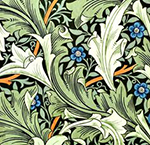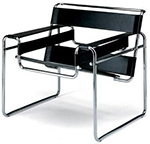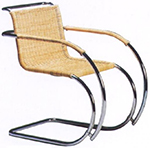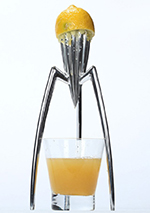Movement |
Philosophy |
Style |
Designers |
Visual Reference |
Arts and Crafts |
Fitness for purpose.
Honesty in design and making, the return to the designer - craftsman as a reaction against industrialisation. |
Simplicity.
Natural forms and materials. |
William Morris.
Ernest Gimson.
C.R Ashbee. |
 |
Art Nouveau |
New aesthetic values for a new urban lifestyle. |
Curvy 'whiplash' lines and stylised flowers.
Feminine form. |
Charles Rennie Makintosh.
L.C. Tiffany.
Antoni Gaudi. |
 |
Bauhaus |
Functionalism.
"Form follows function". |
The machine aesthetic using modern materials. |
Walter Gropius.
Marcel Breuer. |
 |
Modernism |
Machines for living in.
Reducing form to the most essential elements by omitting decorative frills.
"Less is more". |
Simple, geometrically pure forms and clean lines. |
Ludwig Mies van der Rohe. |
 |
Art Deco |
Popular Modernism.
Opulent architectural and decorative arts style in reaction to post war austerity. |
Zig zagged, geometric fan motifs.
Symmetry and repetition.
Inspiration from ancient Egypt. |
Eileen Gray.
Albert Anis.
Walter Dorwin Teague. |
 |
Streamlining |
Consumerism and style.
New prosperity and widened consumer choice.
Celebrating speed and efficiency. |
Aerodynamics.
Tear-drop shape.
Futuristic inspiration. |
Raymond Loewy.
Norman Bel Geddes.
Henry Dreyfuss. |
 |
Post Modernism
(New Design Style) |
"Less is a bore", expressive and individual as opposed to modernist functionality. |
Humour and personality.
Retro design.
Deconstruction. |
Phillipe Starck.
Richard Rogers.
Ettore Sottsass. |
 |
